Ford Active Drive Assist Adds Hands-Free Mustang Mach-E Driving: The Details
Ford promised hands-free driving for the new Mustang Mach-E, and now it's explaining how it'll deliver that, with a new system designed to leapfrog Autopilot and Super Cruise in the automaker's EV. Part of the freshly-updated Ford Co-Pilot360 system, Active Drive Assist will use a combination of attention monitoring and various sensors to support hands-free driving on over 100,000 miles of divided highways in the US and Canada.
Ford has had adaptive cruise control for some time now, which can track the speed of the vehicle in front and help with lane-keeping. Where Active Drive Assist differs, however, is in allowing drivers to actually take their hands off the wheel and – while the system is running – keep them off. Currently, you'd need to be regularly applying some degree of torque to the wheel in order to satisfy the system that you're poised and ready to take over.
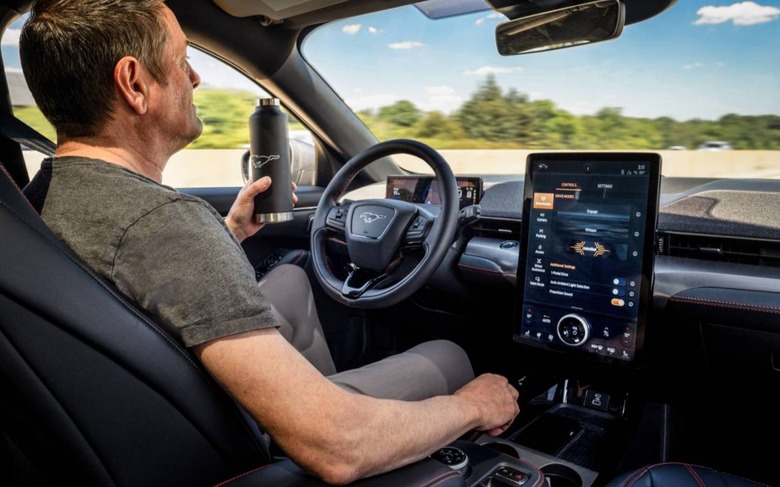
Like with Super Cruise, GM's hands-free system currently offered on select Cadillac models, Ford is using an infrared camera mounted ahead of the driver to monitor their attention. That can track head and eye position, regardless of whether it's day or night, or if the driver is wearing glasses or sunglasses. If they're not paying sufficient attention to the road, Active Drive Assist will flash up warnings on the Mustang Mach-E's digital cluster, and eventually demand they resume manual control.
"It's a key element to ensure that the driver stays in the loop of the driving task, and that the driver is watching the road" Chris Billman, engineering manager for Co-Pilot360, explains. Ford's research suggests it's only about 7 minutes into a car taking over some of the driving responsibilities before the person at the wheel starts considering doing something else.
When activated, Active Drive Assist will use its front facing camera and radar, and its front corner radar, to position the Mustang Mach-E in the center of the lane. It'll only work on pre-mapped, divided highways, and indeed Ford has been cautious about how it refers to the system so that owners don't assume they've bought an autonomous car. "We carefully select names for our features – we make them intuitive, we don't overpromise or imply that the features can do more than they can," Billman suggests.
A large part of that is how Active Drive Assist is communicated within the vehicle. On the one hand, Ford wanted its activation and handover to be as smooth and imperceivable to passengers as possible. "When the system is switched on," Darren Palmer, Global Director for BEV at Ford boasts, "the passengers would not even notice the system has come into play."
At the same time, though, the driver needs to immediately know what's in control, and what's expected of them. That, Palmer says, is one of the main reasons the Mustang Mach-E still has a dedicated driver instrumentation display.
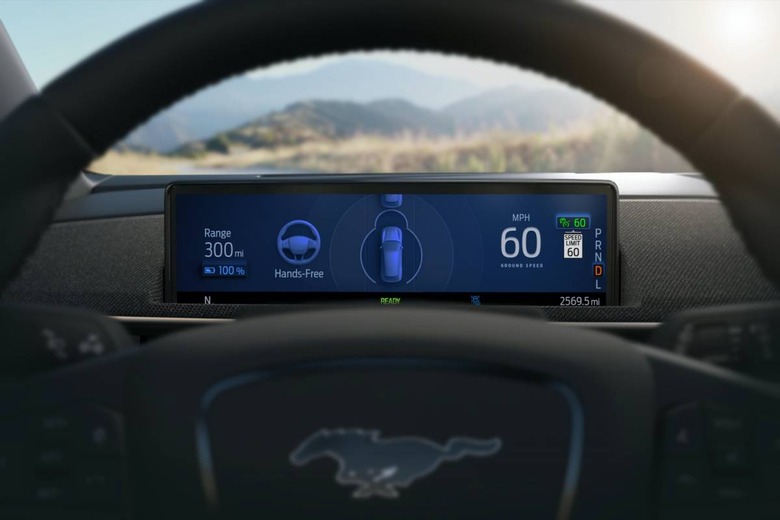
"It's a complicated thing to communicate to people, the states that the vehicle is in," Palmer explains, "so the team used a human-centered design approach to do this, and tried out all manner of graphics, color, and different information to see which of them would be understood by the most people without education." Areas where Active Drive Assist is available will be flagged, the Mustang Mach-E prompting the driver to use it when that's possible.
There'll be animations showing whether they should take the wheel or release it, and a "protective bubble" overlaid on a graphic of the car to show when the system is active and keeping the EV in its lane. Indeed, the whole color-scheme of the display turns blue when Active Drive Assist is operational.
When it comes to handing back over, that's something Ford has intentionally made easy as well. "Some of the systems on sale are very strong, and they lock in, and when you get a bit nervous and you want to change it ... you really have to wrestle with it," Palmer comments. "In one of the popular systems you really have to break free from it, and for people it's very unnerving."
Ford Active Drive Assist will need both hardware and software upgrades
Actually getting Active Drive Assist will be a little complex, at least initially. The functionality itself won't be active until the second half of 2021, Ford says. However the hardware – which is being called the Ford Co-Pilot360 Active 2.0 Prep Package – will be available on the Mustang Mach-E from day one.
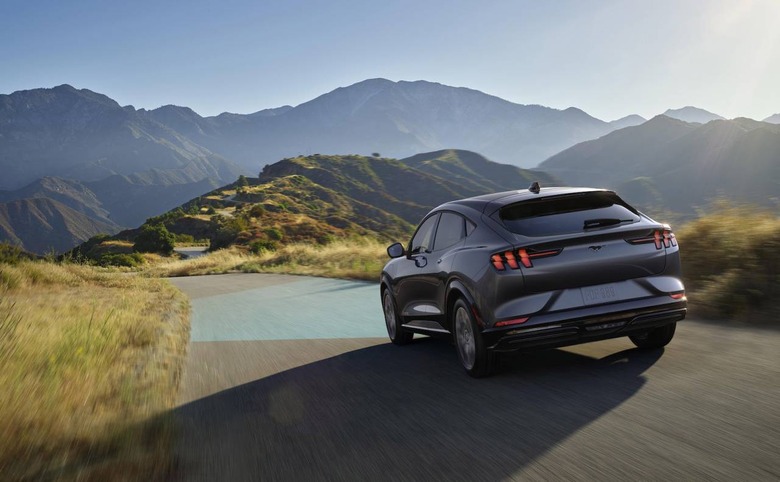
It'll be standard on higher trims, like the First Edition and Premium, and optional on others. Adding it, though, won't get you Active Drive Assist until an over-the-air (OTA) software update in 2021. That, too, will come with a fee.
Until then, the Prep Package will add Active Park Assist 2.0. That can automatically parallel and perpendicular park the Mustang Mach-E, as well as get the EV out of a tight space. Ford Co-Pilot360 2.0 will be standard on all Mustang Mach-E trims, meanwhile, and adds road edge detection and blind spot assistance to the existing blind spot warnings with cross traffic alerts, pre-collision assistance with emergency braking, post collision braking, reverse brake assist and sensing, and auto high-beams.
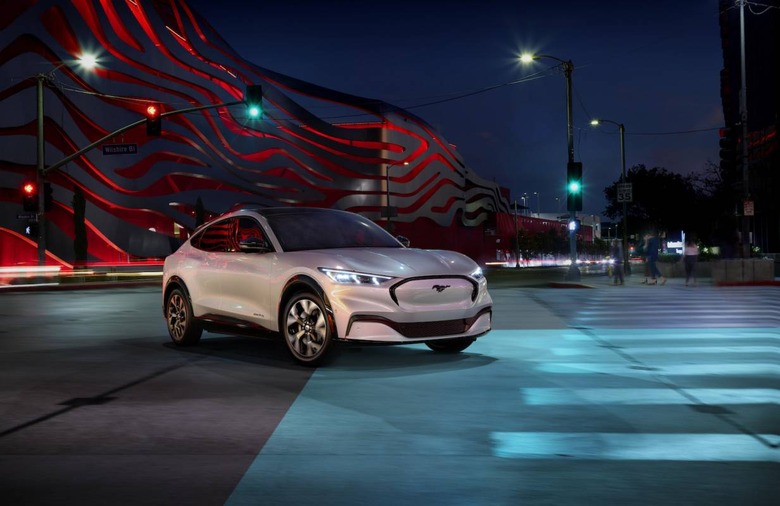
Other tweaks include speed sign recognition for the adaptive cruise control, and the system can now automatically resume driving after 30 seconds stationary in stop/go traffic, rather than just 3 seconds. Intersection Assist uses the front camera and radar to detect oncoming traffic if you're trying to turn left at a junction, with the car able to alert and auto-brake if there's a potential collision situation happening.
Ford is making use of OTA from day 1
OTA updates are probably best known in relation to Tesla in the automotive world: the EV company has made a name for itself, pushing out new features and fixes to its cars. Ford is aiming to do something similar with its electric crossover.
Every Mustang Mach-E module is designed to support OTA updates. "Most of them, as well, we can do A/B update," Palmer explains, "which means the system downloads the update in the background and when it's ready it says "would you like to update these features?" And when you cycle the power of the car it's instantly available." If something goes wrong, Ford will have a local backup of the previous system state it can quickly restore.
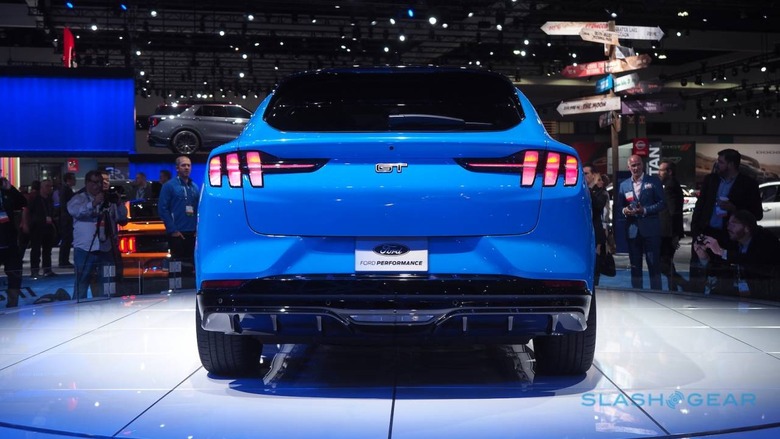
"Well be planning regular updates for the vehicle, all through its life," Palmer promises. "Every piece of the car can be modified."
Active Drive Assist is a good example of that, though Ford's team won't be drawn on how much it will actually cost when the software is ready. "It will be highly competitive," Palmer insists, "because we want as many people to have this as possible."
Ford's system is a welcome step forward, but there are still gaps. There's no automatic lane-change, for example, which Tesla Autopilot offers and the latest version of Cadillac Super Cruise is adding. Expanding Active Drive Assist to new roads, meanwhile, will require their mapping first, though Billman says Ford plans to add more supported roads as highways evolve.
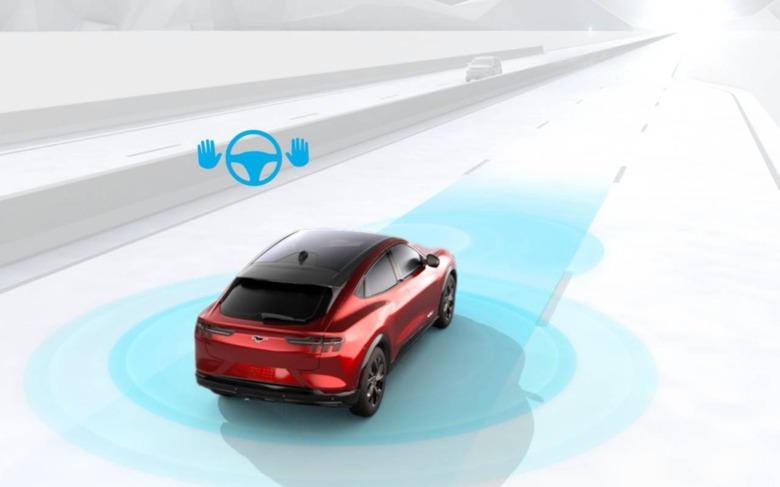
Though new for Ford drivers, this has been in the pipeline for the automaker for some time. Active Drive Assist has been tested on more than 650,000 miles of driving, the Co-Pilot360 team says, in almost every US state and driving condition. Daytime, nighttime, clear weather, storms, rain, and more. At the same time, Ford has been thinking about other factors, such as privacy. Data from the attention monitoring camera, for instance, will all stay locally in the Mustang Mach-E, not get transferred to the cloud.
Sales of the 2021 Mustang Mach-E kick off later in the year, with Ford promising the first US deliveries before the end of 2020.
